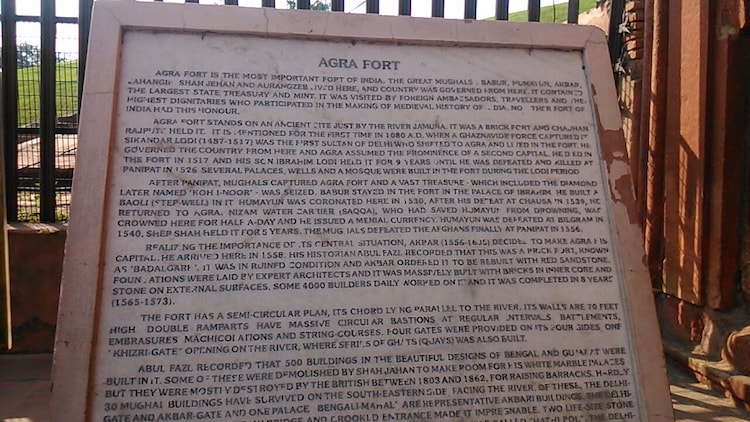Who built the Agra Fort? ASI doesn't know
The Archaeological Survey of India (ASI), a part of the Ministry of Culture, has accurate information about India's history but lacks knowledge about who built the Agra Fort first and what changes it underwent during Akbar's reign.

The Agra Fort is a world heritage site that attracts people from all over the world. This fort has been occupied by several dynasties, including the Rajputs, Mughals, Jats, and Marathas. Yet, it is still debated who built it originally.
The Archaeological Survey of India (ASI), which is under the Ministry of Culture, Government of India, has authentic information about India's history, but surprisingly, it has no information on who built the Agra Fort first and what modifications it underwent during Akbar's reign. In answer to an RTI request, the department's Public Information Officer stated that information on who built the Agra Fort is not available with his office.
Dr Devashish Bhattacharya, a resident of Agra's Kalibari, requested Agra Fort information from the ASI on May 27 under the Right to Information Act. The subject of who erected the Agra Fort originally was raised. What alterations did Emperor Akbar make to Agra Fort? Before the construction of the Agra Fort, knowledge regarding the work done there and the history of Badalgarh Fort was also sought. Mahesh Chand Meena, Central Public Information Officer of ASI Agra Circle, responded that no such information on the questions asked in the office is available. Such information can be found in contemporary literature.

According to Dr Bhattacharya, Agra Fort is on the list of world-historic sites. “It's odd that the record isn't available at ASI's Agra Circle. The information should be available with the ASI, and the lack of this information with the ASI is serious. It is beyond comprehension what problem the ASI has with stating the historical facts about the fort,” said Bhattacharya. He said that he has currently filed an appeal in this matter with the ASI's appellate officer.
ALSO READ| Diwan-e-Aam of Agra Fort closed for tourists after cracks surface on ceiling
Vishal Sharma, secretary of the Agra Tourist Welfare Chamber, said historians believe that in the 11th century, a fort named Badalgarh was built of mud and bricks by Rajputs of the Sikarwar dynasty at the site where the Agra Fort currently stands. Mahmud Ghaznavi took this fort from the Rajputs in 1080. This fort was seized by Sikandar Lodi in 1487, but it had turned into ruins by that time.
After it was renovated in 1504 AD, Sikandar Lodhi used it as the Lodi dynasty's centre of power. Sikandar Lodi died at this fort, and his son Ibrahim Lodi governed from here for nine years. Ibrahim Lodi was killed fighting Babur's forces in the First Battle of Panipat in 1526. After losing to Babur, the Lodhi dynasty's authority came to an end, and Badalgarh fell under the power of the Mughals, along with the Kohinoor diamond, known as the "Pride of India". In 1530 AD, Humayun was crowned as the second Mughal emperor at this fort, but, in 1539, Humayun was defeated by Sher Shah Suri in the Battle of Chausa, and Sher Shah took over this fort.
Even after Sher Shah's death in 1545 AD, this fort remained in the Suri dynasty's suzerainty until 1556, when Hemu was defeated in the Second Battle of Panipat by Bairam Khan, Akbar's general, and it was taken back by the Mughals. Although Babur was the first Mughal emperor to occupy Badalgarh, Akbar was the first to declare Agra his capital. He reconstructed Badalgarh in its present form, utilising the abundant red sandstone around Agra.
Sharma stated that the ASI's failure to respond to the question is odd because archaeologists exclusively examine the history and have thorough information about the history of monuments, which they utilise to maintain the monuments. He said that the history of the Agra Fort is already engraved on a stone slab at the fort's entrance, but still, the ASI failed to answer simple questions about the fort.
